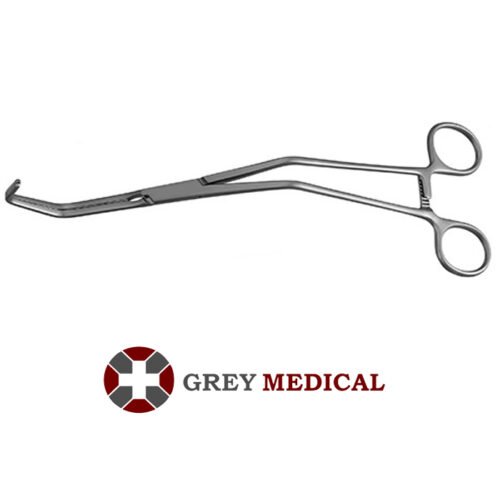Surgical advancements have transformed the way critical procedures are performed, with precision instruments playing a vital role in ensuring success. Among the most reliable tools used in cardiovascular and thoracic operations is the satinsky clamp. Known for its durability, unique design, and ability to provide effective vascular control, this instrument has become an indispensable asset in surgical theaters around the world.
Understanding the Satinsky Clamp
The satinsky clamp is a specialized vascular instrument designed to partially or completely occlude blood vessels during surgery. Its long, slender jaws and angled tips allow surgeons to control blood flow with minimal trauma to delicate vascular structures. The clamp is often utilized in procedures involving the vena cava, aorta, or other large vessels where precision and control are of utmost importance. Because of its ergonomic design, it ensures surgeons can work efficiently while minimizing patient risks.
Design and Features
One of the defining qualities of the satinsky clamp is its curved, atraumatic jaws, which are engineered to provide firm yet gentle occlusion. These jaws prevent unnecessary damage to vessel walls, which is critical in high-stakes surgeries. The instrument is typically crafted from high-quality stainless steel, ensuring both strength and resistance to corrosion. Its lightweight structure reduces fatigue during long procedures, while its smooth surface allows for easy sterilization and long-term reuse.
Applications in Cardiovascular Surgery
In cardiovascular surgery, precision and control can mean the difference between success and complication. The satinsky clamp is widely used in open-heart procedures, bypass surgeries, and operations involving major vessels. Surgeons rely on it to temporarily stop or regulate blood flow without completely disrupting circulation. Its ability to provide partial occlusion enables surgeons to operate with clarity while ensuring that vital organs continue to receive adequate perfusion.
Importance in Thoracic and Abdominal Procedures
Beyond cardiovascular interventions, the satinsky clamp is equally valuable in thoracic and abdominal surgeries. When surgeons are working near major vessels in these regions, controlling blood flow is essential to preventing hemorrhage and maintaining a clear surgical field. The clamp’s unique design makes it suitable for accessing deep or confined spaces, where precision handling is critical. Its adaptability has made it a staple instrument across multiple surgical disciplines.
Why Surgeons Trust the Satinsky Clamp
The trust surgeons place in the satinsky clamp comes from its proven performance, reliability, and ergonomic design. Its ability to combine strength with delicacy ensures patient safety while enhancing surgical efficiency. Surgeons appreciate the confidence that comes with using an instrument designed for stability and precision. With advancements in surgical technology, the clamp continues to evolve, but its foundational purpose remains unchanged: to safeguard patient outcomes during complex procedures.
GreyMedical® Commitment to Quality
GreyMedical® is a privately owned medical technology company dedicated to innovation and excellence in the craft of surgical instruments. By adhering to international quality standards and focusing on precision engineering, GreyMedical® ensures that instruments like the satinsky clamp are manufactured to meet the demanding requirements of modern surgery. Their dedication to quality not only benefits surgeons but also enhances patient care worldwide.
Conclusion
The satinsky clamp remains one of the most significant instruments in surgical practice today. Its precision, durability, and adaptability make it an essential tool for cardiovascular, thoracic, and abdominal procedures. Surgeons around the world continue to trust its reliability when performing life-saving operations. Backed by the commitment of trusted manufacturers like GreyMedical®, this instrument stands as a testament to the importance of high-quality surgical tools in advancing modern medicine.





Comments